AFL 2021: Steve Hocking on new rules, COVID vaccines and a flexible fixture
Some have argued the penalty for disobeying controversial new manning the mark rules is too much – but AFL rules boss Steve Hocking disagrees.
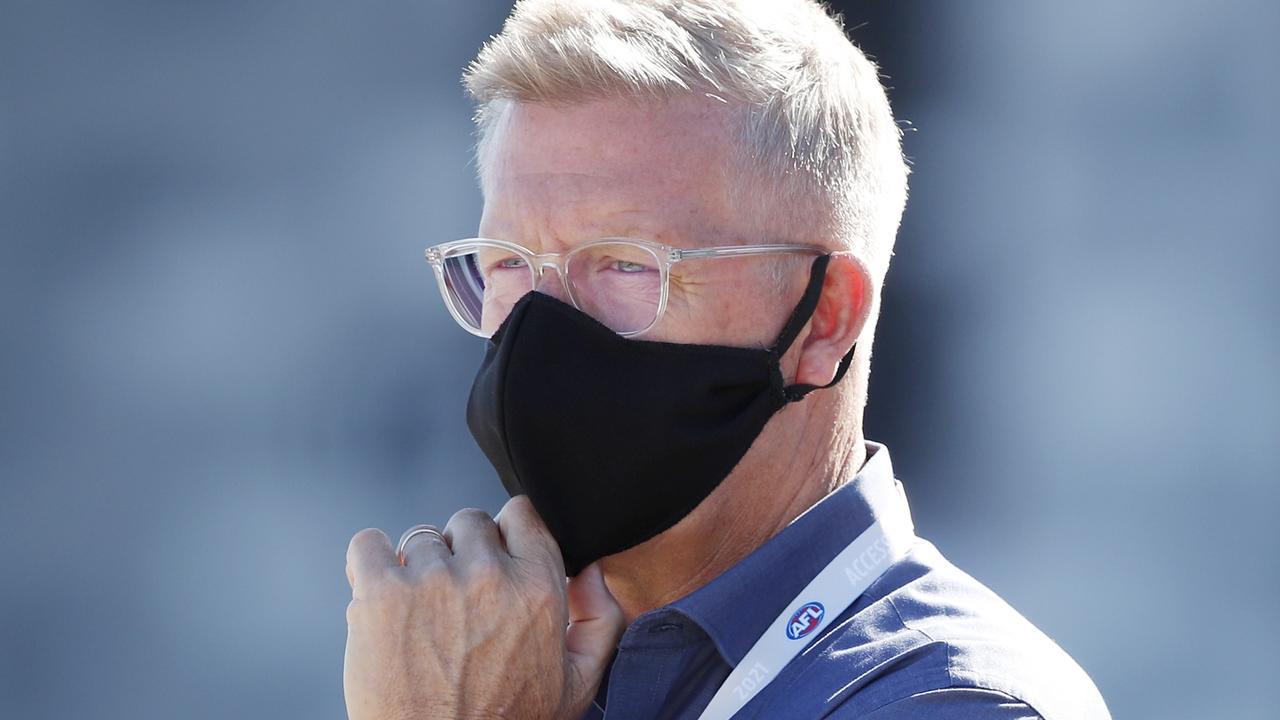
AFL football operations boss Steve Hocking has revealed that a 25m penalty was considered for the game’s new man on the mark infringement, but was quickly dismissed in favour of the traditional 50m penalty.
He said he was so far happy with how the 2021 rule changes have rolled out during AFL pre-season practice games, including the 50m penalties that will be handed to players who break the new man on the mark rule.
The AFL says players have no reason not to adhere to its man on the mark guidelines as the hard-line stance was laid bare in Essendon match simulation.
Players have to stand like statues on the mark when the umpire calls “stand”, not even able to move laterally by a handful of steps to cut off a handball or kick travelling inboard.
Footage of Essendon’s scrimmage posted on social media had traditionalists, including Richmond great Matthew Richardson, up in arms as Kyle Langford was penalised for shuffling three or four steps sideways as the ball was booted long.
Vision of the new on-the-mark rule 👀
— 7AFL (@7AFL) February 23, 2021
(via @NotRodd)
pic.twitter.com/0ocLSWXoYG
Under the letter of the law, the umpire made the correct decision but there are worries about a spate of early 50m penalties.
Hocking said dolling out a 25m penalty instead of a 50m penalty for the infringement was considered, but the decision was made to stick with the 50m penalty because that’s what everyone’s used to.
“And there has to be a reasonable-sized penalty,” Hocking told SEN Melbourne breakfast hosts Garry Lyon and Tim Watson.
“One of the things we’ve got to remember around the reason for the introduction of this rule, is delaying the pressure that comes from a guy standing on the mark.
“The 50m penalty, if you do move laterally, that’s the transgression and that’s in the laws of the game and that’s what we’re applying.”

Lyon said he had spoken with an AFL player who loved the rule and couldn’t wait for the game to get started.
Hocking said one of the clearly obvious benefits of the rule when watching the
Western Bulldogs-Hawthorn friendly on Wednesday was that the leading lane had become available.
“There’s a lot more roving behind and with that, that’s delaying the pressure that’s applied where the guy stands on the mark previously, he had the ability to influence setting up ahead of the ball and it was noticeable yesterday that you don’t have the time to go and do that.
“So the amount of times it went into the forward-50 ... there were so many more one-on-ones.”
Q&A WITH STEVE HOCKING
In a wide-ranging interview with the Herald Sun earlier in the week, in which he covered all facets of the state of the game, Hocking said there was a responsibility on players and coaches to know the rules.
He said there would be 500 umpire visits to clubs by Round 1 so umpires and players could practice the rules.
Watch every match of the 2021 AAMI Community Series LIVE on Kayo. New to Kayo? Get your free trial now & start streaming instantly >
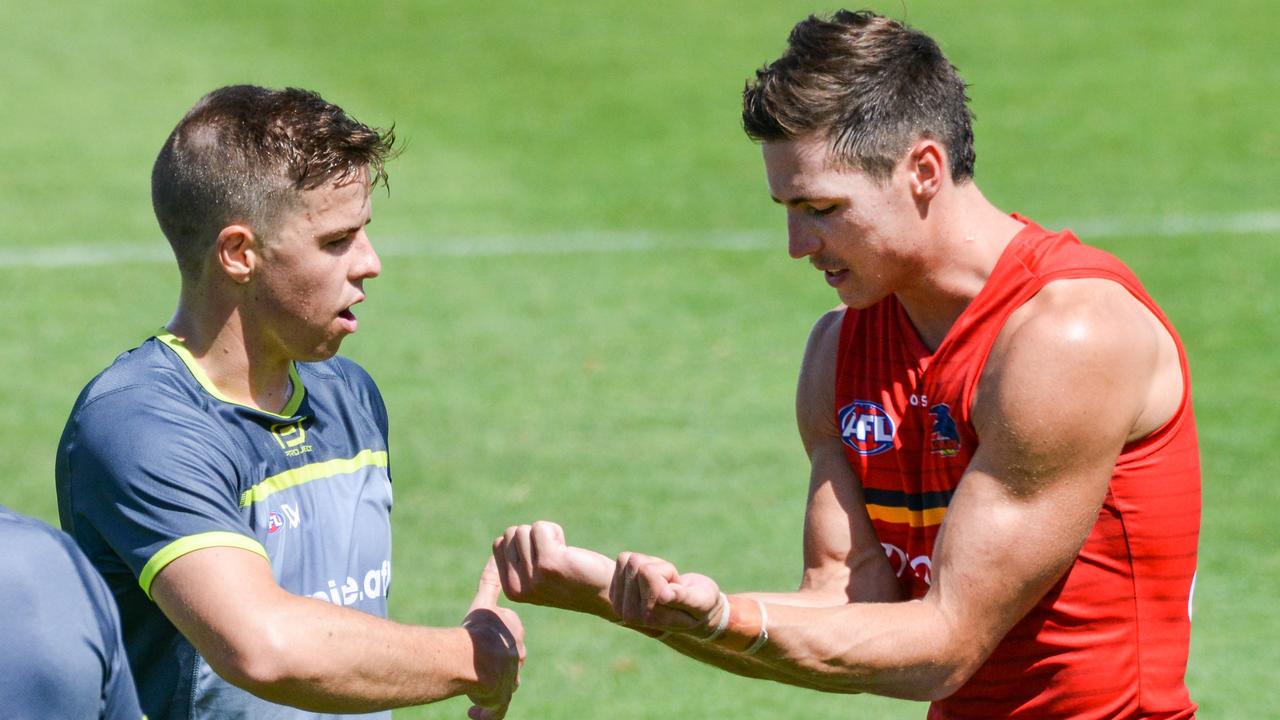
“They are umpiring match simulation and bringing an education with them but also working on their skills. They are there to umpire to the rule book, and standing the mark is no different.,” Hocking says.
“We are getting everyone to work together so it’s the responsibility of the umpires to officiate to the laws but the second part is the responsibility of coaches and players to make sure they understand the rules. We have to be very careful not to place all of the responsibility at the umpires’ feet.”
It means players have had the new man-on-the mark rule continually reinforced amid fears of a spate of 50m penalties before the new interpretation is bedded down.
So if the players don’t know the rules, it’s their own fault?
“Definitely they should know the rules.”
Oh my hat. https://t.co/vusyVDI9U1
— Matthew Richardson (@mattricho0) February 23, 2021
What a joke https://t.co/xPkU5Mv7Is
— Warren Tredrea (@warrentredrea) February 23, 2021
Hocking wants to make one thing clear.
A new man-on-the-mark rule, which will effectively lock the player on the spot by yelling “stand”, is not the panacea to what ails the game.
He says it is part of a suite of changes he hopes will combine to find a better balance between attack and defence, after teams scored an average of a miserly 80.4 points per game in 2019.
“This is more than the man on the mark,” he tells the Herald Sun.
“Game length returns to 20 minutes quarters, there are 75 total player interchanges per match, the location of the mark from kick-ins has gone from 10m to 15m, and then there is the standing the mark rule.
“We are trying to find that better balance between attack and defence. It’s really important for the future of the game. So we want a bit more space in the game so players can actually have the ability to attack and take the game on.
“Remembering we have three weeks to go, but the feedback we are getting from clubs is that 45 (degree kick) is now available and the corridor is open, so it’s what we are trying to achieve.”
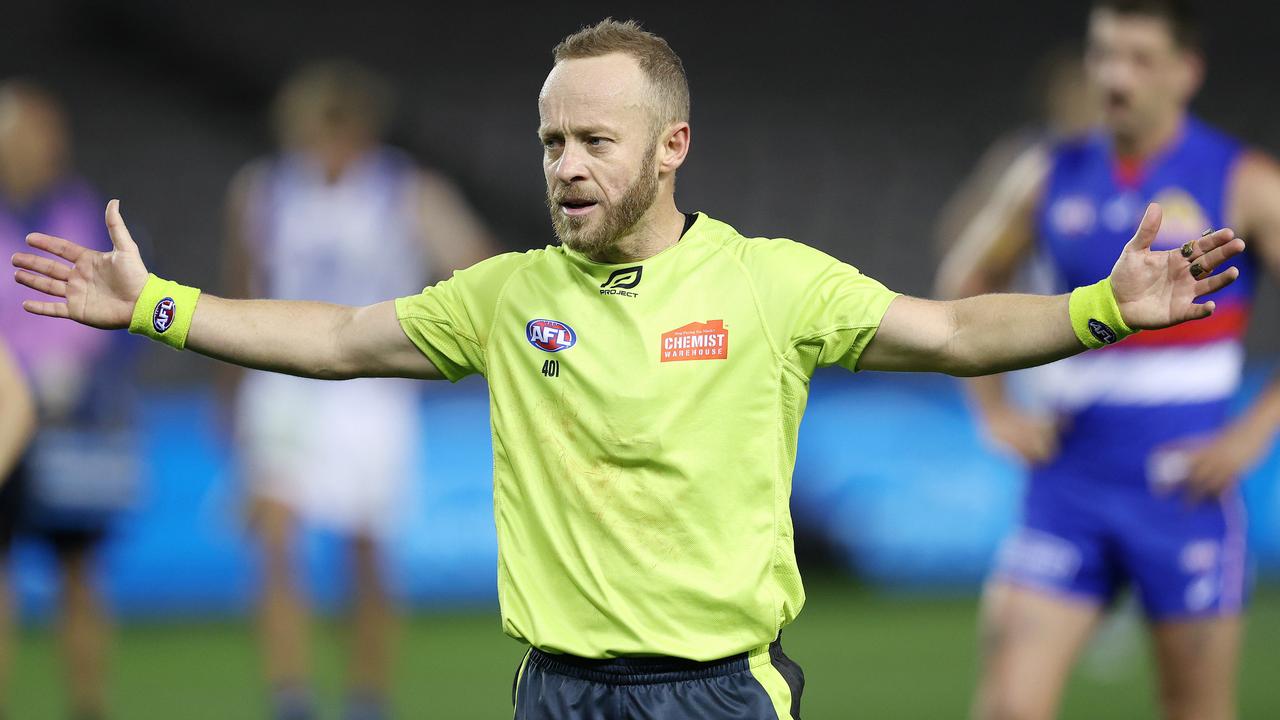
Hocking refuses to judge the success of those roles on scoring rates that are now at 50-year lows.
“No, the important thing is how the game is played. And having time and space. So a better balance between those two is what I am looking or and that’s why my (game analysis) team is working on.
“There is certainly a trend there (with lower scores). If you go back over a period of time we are trying to get the balance right. We put in the 6-6-6 rule, the kick-in piece, so we want all those things to work in harmony.”
Hocking has spent his first three years attempting to build what he calls a “greater rhythm” between players and coaches and the senior umpires.
This year the umpires have already attended 310 training sessions with clubs, explaining rules and officiating match practice and scrimmages.
They will hit 500 visits by Round 1, up from around 50 several years ago, with one club having already had 25 visits over summer.
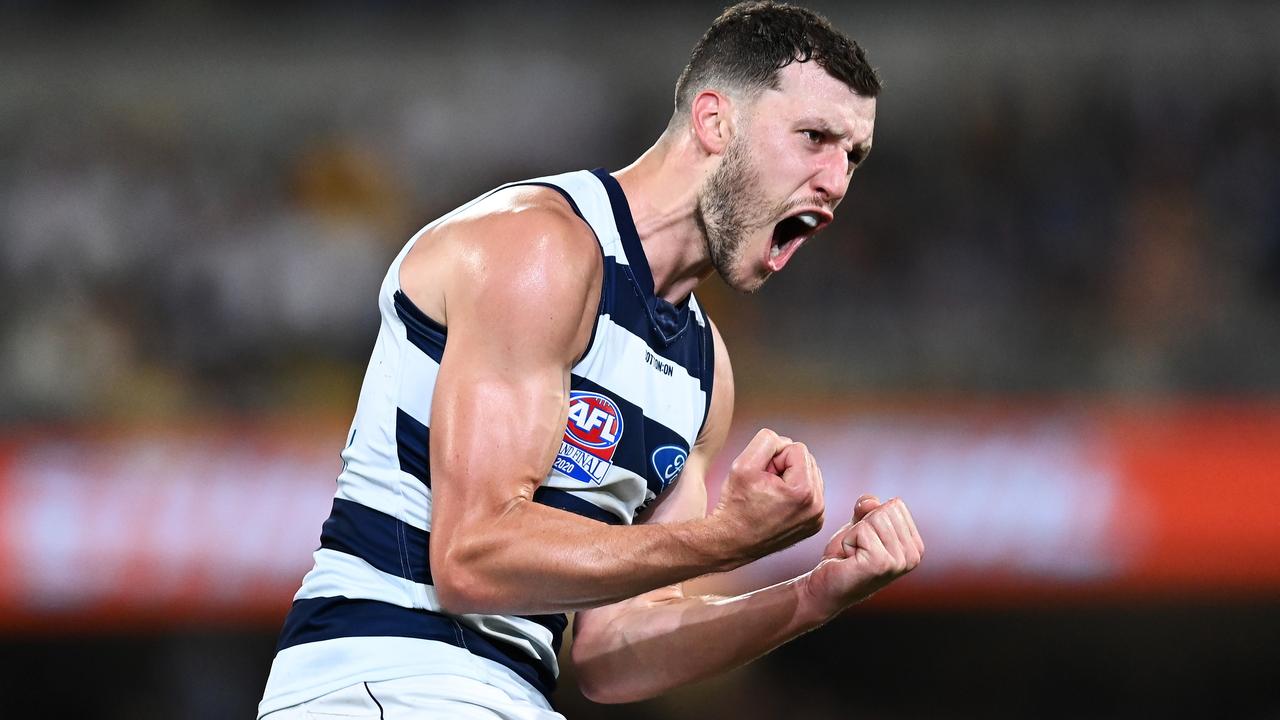
Slashed interchange
Why doesn’t the AFL just get serious about a significant cut to interchange, given clubs bleating about its reduction still pull players off only minutes into games?
Hocking says the league is open to further reductions but only if the statistics stack up to show it would definitely open up the game.
“It’s certainly something we will do behind the scenes and our game analysis team will be part of that. We will partner with Victoria University to do a lot of work on it,” he says.
“It’s been mentioned by clubs that players, particularly onballers, will have to head for other parts of the ground as opposed to going to the bench. That could be a potential upside.”

More zones?
Hocking’s game analysis group was so serious about pondering zones in the AFL they conducted extensive trials in 2018.
They stopped short in part because of the delay that was caused in herding players back into the 50m zone.
In the VFL there must be three pairs of players inside 50 — including one pair in the goalsquare — at every throw-in and kick-in.
The rule is not enforced at throw-ups around the ground.
If a team isn’t back at a kick-in they concede a 50m penalty, and if they aren’t back at a throw-in they concede a free kick.
He is genuinely excited by the possibilities, saying the rule should in theory spread the ground without fans even noticing.
“We are doing a study to support it, a piece of work on the distribution of numbers across the ground and the reason for that is maintaining a better balance between attack and defence.
“So there is a level of excitement within that competition. It may make a difference to the game and the jury is out, so we will work through it. We need to remember it’s in breaks in the games. Have a look at 6-6-6. It’s not unlike that.
“We have worked through it that it takes about 12 seconds for each boundary throw-in. For a ball-up its only eight to nine seconds so it’s not enough time to reset and spread the ground.”
Hocking says players spreading out across the ground between 60-80 times — apart from the 6-6-6 rule after goals — will enhance the game without new lines on grounds.
Why is the new VFL called the VFL?
The new VFL is a mash-up of the old NEAFL and VFL, with 22 teams from three states.
Non-Victorian teams weren’t thrilled by the league retaining the VFL name, but Hocking says it stacked up.
“It’s just the rich history of the VFL name. It has got an unbelievable history and so we have retained that for that very reason. We understand there is some other version we could have come up with, but we have got a competition that is going to be really strong as far as the eastern states at an elite level and it’s going to support the AFL well.”
Concussion and Paddy McCartin
As revealed by the Herald Sun, the AFL’s concussion protocol has doubled in length, with 12 days needed before a concussed player can again take the field.
Hocking says the AFL implicitly trusts its club doctors to make the right call on diagnosing concussions that could see players missing finals as a result.
“We need to look after the health and safety of our players. If you have a look at how it’s been implemented across the AFLW, it’s been seamless,” he says.
“We have incredible doctors in the AFL. The game is supported by so many people that make good decisions on the health and safety of players.”
Former No.1 draft pick Paddy McCartin will play VFL for Sydney’s reserves side this year, having worked with a battery of experts after repeated concussions.
He hasn’t officially been cleared to play games, with Hocking saying a panel of experts would give the Swans guidance as he prepared to play.
“It’s a medical matter, that’s the first thing I would say. The medical team is working through that (so when he’s ready to play) that’s a process that medical team would work through.
“The most important thing in this is that his wellbeing is a priority for us.”
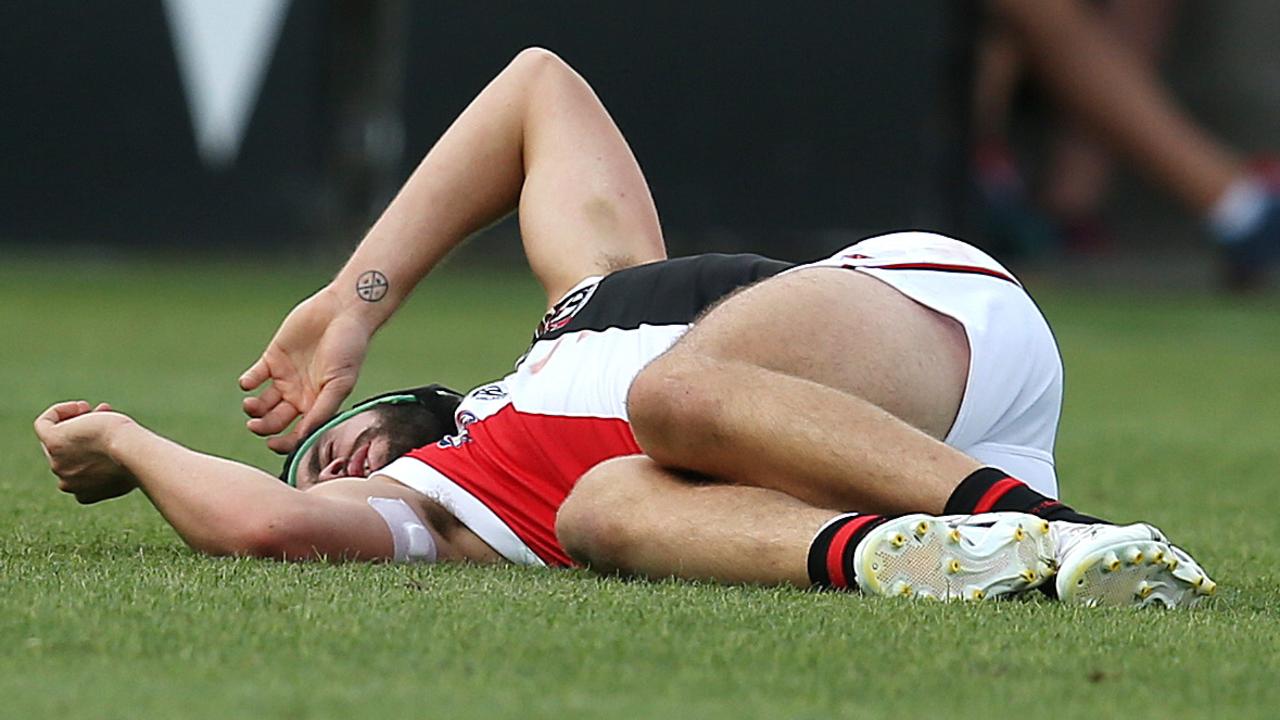
The end of Thursday night teams
The announcement of Thursday night teams and squads was the bedrock of footy TV shows for decades, but this year teams will lodge their side 24 hours before games.
“What we found, and there was a real upside to this last year, is there is a greater flexibility for clubs. Leading into games there were a lot of late changes that were happening. This ironed out a lot of that.”
But given the explosion of fantasy teams and football betting, shouldn’t clubs be more transparent about player availability?
Hocking’s former side Geelong especially relished taking the mickey with almost-weekly late changes at one stage.
“I think what we saw last year with the 24-hour piece made a big difference and it was far worse prior and it has sorted itself out, even if there is the odd outlier,” Hocking says.
AFL WON’T JUMP VACCINE QUEUE
The AFL has vowed it will not attempt to jump the vaccine queue and instead navigate a difficult COVID landscape using regular testing and social distancing protocols.
The league has told players they will not be trapped in their homes with stringent COVID rules that last year saw them unable to sit down in restaurants or have friends in their houses.
Last year as COVID cases escalated the AFL’s players had a lengthy rule book of restrictions that basically saw them trapped in their homes apart from training and playing.
AFL football operations manager Steve Hocking told the Herald Sun players would this year be governed by the rules of their respective states, but not given an extra layer of onerous restrictions.
In January Australian Cricketers' Association chairman Greg Dyer said it was “morally defensible” for elite sportspeople to jump the queue for vaccines to safeguard them for tours including the now-cancelled trip to South Africa.
But the league is confident it can safeguard an AFL industry worth hundreds of millions of dollars without requesting early vaccines.
Most players are in the 18-35 age bracket which means they will be last in a queue that includes quarantine workers, essential service workers, aged care residents and people over 65.
“There are so many people in that queue who are well ahead of us,” Hocking told the Herald Sun.
“We have got a whole cohort who now know how to live to the protocols and keep themselves safe and well. That’s been an overlay 12 months in the making and we have made incredible advancements on that. At the appropriate time the government will have a chat to us about (vaccines) but right now we are looking after the industry through our protocols and staying aligned.”
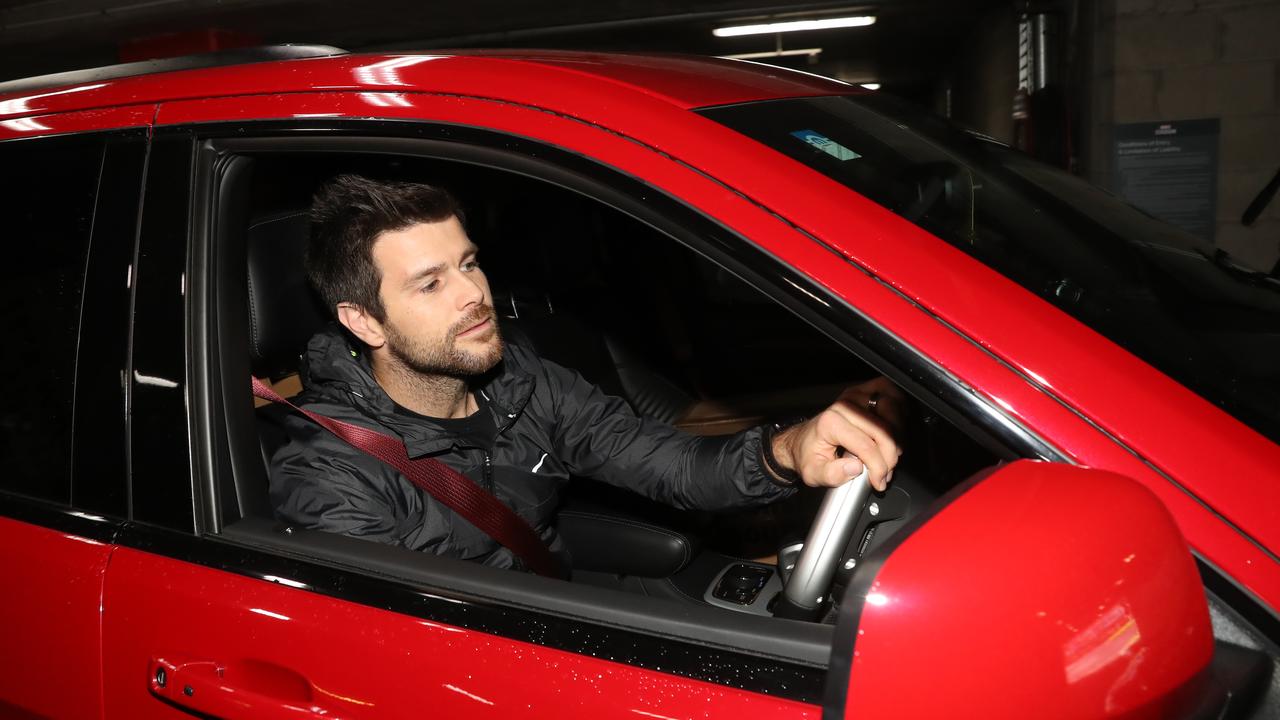
The latest health advice is people not in high-risk categories will wait until the second half of the year to be vaccinated.
At one stage last year players could not surf, fish or golf, take their kids to the playground, let social visitors into their houses, go to another workplace or attend university in person.
Players will continue to have weekly COVID tests but otherwise follow the current state laws around social distancing and density numbers.
“We have aligned all our programs to what is happening in that state,” Hocking said.
“With what’s gone on recently we have had positive cases in South Australia and Queensland, across WA, here back in Victoria and what we have done is adapt to each of those state’s requirements.
“As we move through new phases we have all matured and we are confident we can continue to operate and function quite normally.”
FIXTURE COULD BE TURNED UPSIDE-DOWN
The AFL has warned clubs to brace for interstate road trips lasting several weeks but told them it will do everything in its power to avoid lengthy hub stays for players.
AFL football boss Steve Hocking told the Herald Sun on Friday the league was bracing for another season of fixture upheaval given every AFLW round so far has been altered by COVID.
The league is keen to play the first six rounds of the AFL season as currently set down but admits as it plays through a COVID pandemic that could rapidly change.
Clubs might have to get out of a state with a COVID outbreak and play three or four weeks of interstate fixtures under a revamped fixture before heading home when the transmission is under control.
The league is hopeful of crowds of at least 50 per cent for an AFL season that starts with Richmond and Carlton’s Round 1 clash at the MCG on March 18.
Hocking said the league would stay aligned with the state government on crowds, but was hopeful of a run of few or no COVID cases in coming weeks in the hope Victorian crowds might “push beyond” 50 per cent.
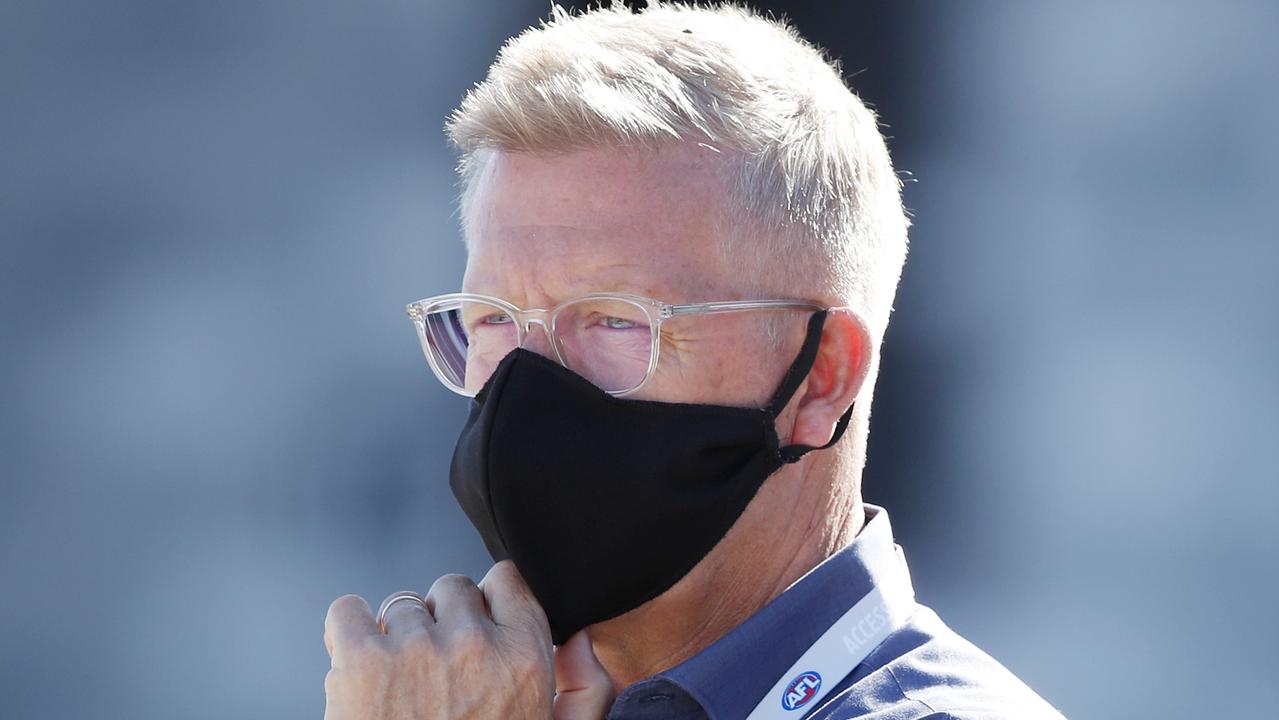
Hub-life brought many AFL clubs, coaches and individual players to breaking point in 2020.
So as the AFL’s clubs were told by the league in a phone hook-up this week any road trips interstate would be for several weeks rather than the hub experiences that stretched past 100 days for Richmond and Geelong.
“We have spoken to the clubs about the potential for teams to be on the road if required,” Hocking told the Herald Sun.
“It’s our starting point. We need to be mindful the pandemic is ongoing. We need to remain agile across the year which we did really well in 2020. We need to recognise teams may need to go on the road. If you look at the AFLW you have a look at how that has started. We haven’t had a round where adjustments (to the fixture) haven’t been made.
“We are telling clubs to prepare in that way. It was an amazing effort by everyone last year. I sit here and shake my head about how everyone got through it. It looks quite different to what it did last year with smaller numbers of positive cases so what we are telling clubs is smaller cycles of being on the road. You go on the road for a short time, you knock over games and that’s what everyone is working towards.”
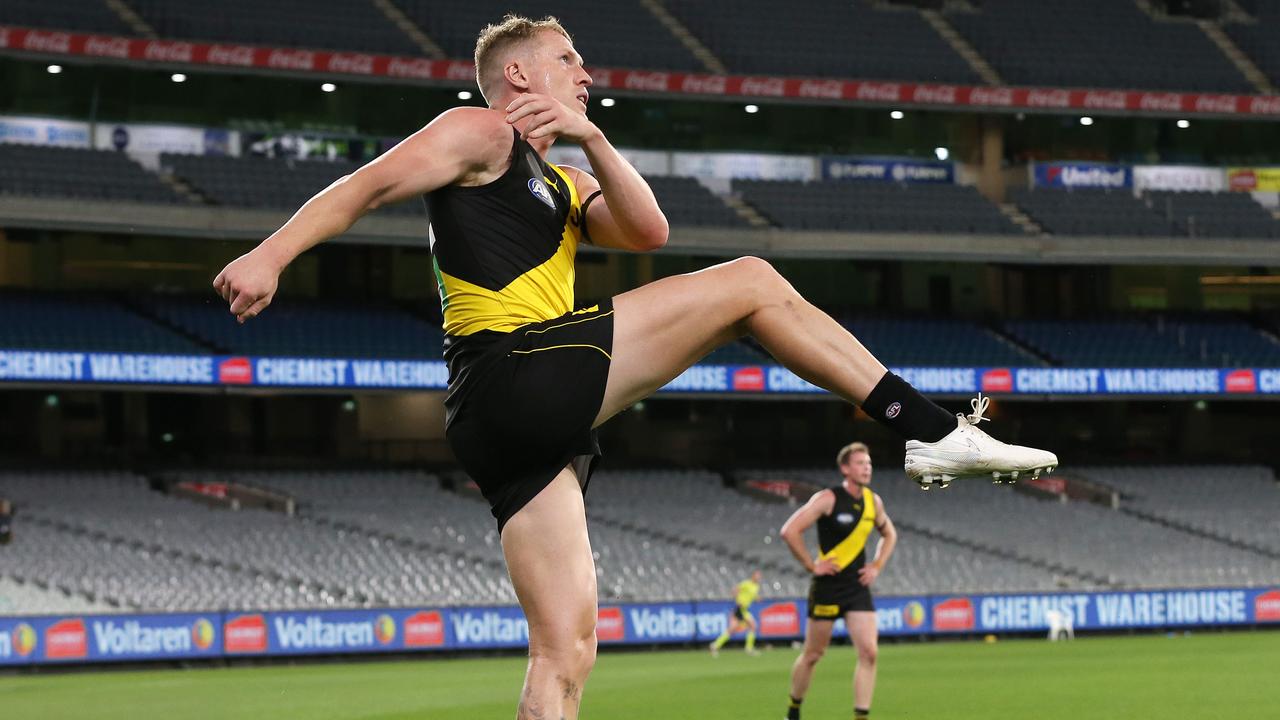
The AFL has locked in six rounds with specific opponents, venues and game times then for the rest of the season has only scheduled opponents and venues but no game dates or times.
Fixture chaos is likely as the league attempts to schedule nine games per round in states that are free of COVID or have no border restrictions.
Yet even last year as the country was rocked by COVID the league found a way for teams to play a 17-game season and finals.
Hocking said the AFL was optimistic it would not need a condensed period of games as teams made up missed fixtures even if the schedule doesn’t proceed as initially forecast.
“We have announced the first six rounds and the intention as we speak is to get those six rounds away but the pandemic is ongoing,’” he said.
“Like last year everyone has to be agile. We have lived through it and everyone has the capacity to do. We are doing a lot of work with everyone across the competition to understand what we can take foreword from last year and how we can put in place an advanced decision-making framework.”




